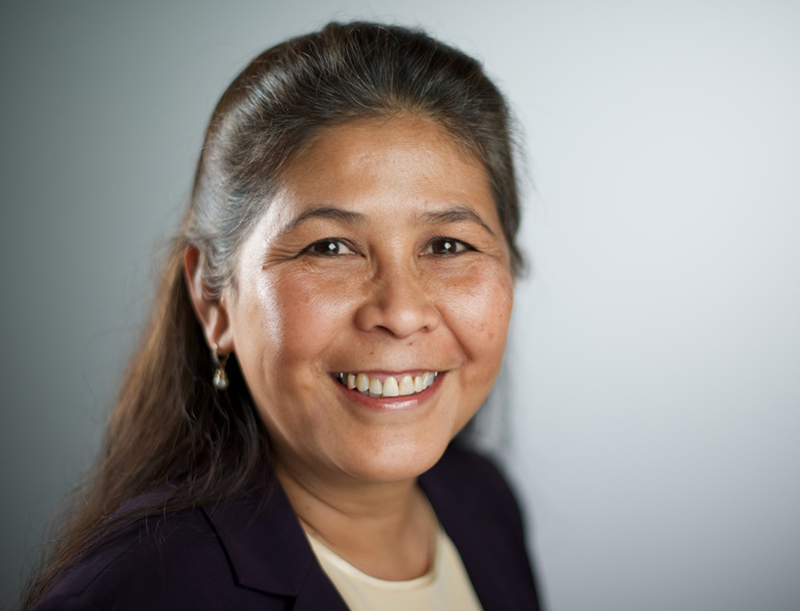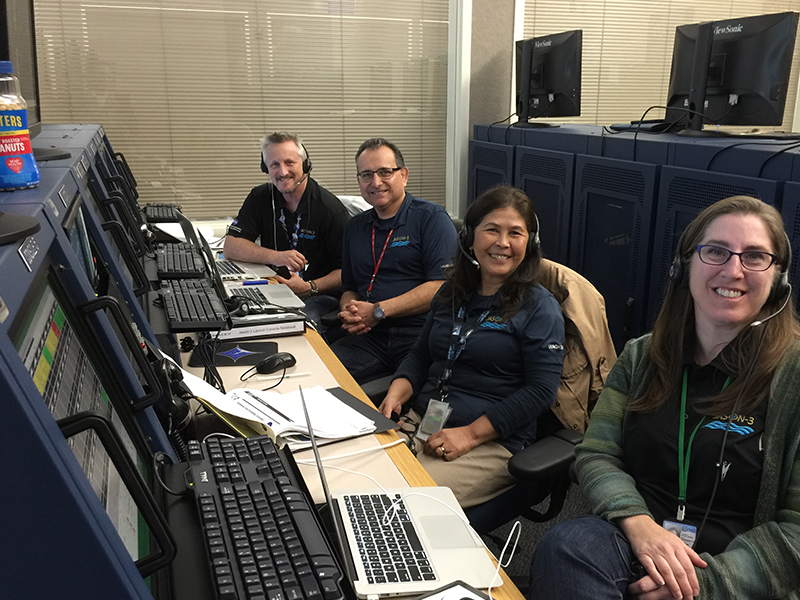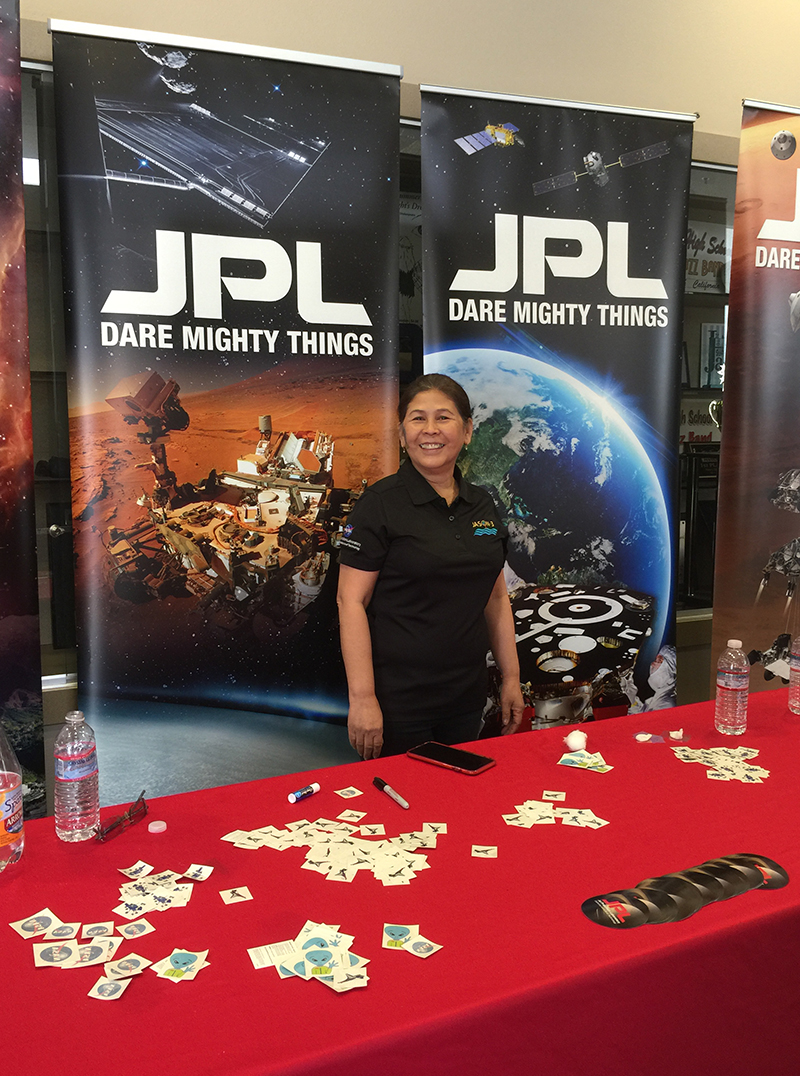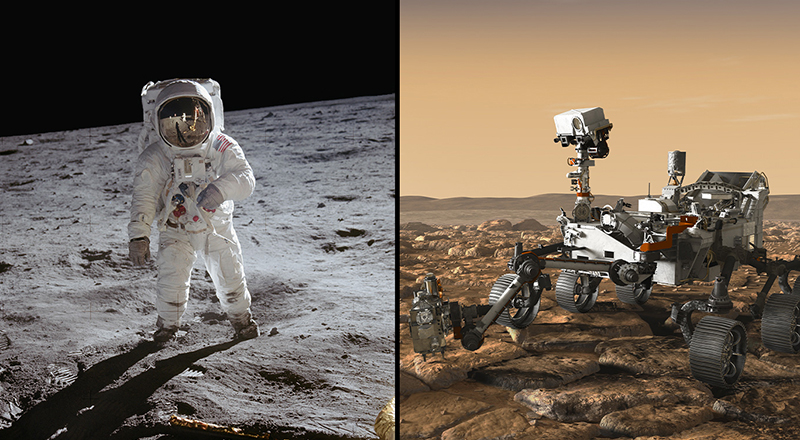
Khanara Tauch Ellers
Engineer - NASA's Jet Propulsion Laboratory
Net Young, Battambang, Cambodia
California State Polytechnic, Pomona, California
Bachelor of Science in Mechanical Engineering
University of Redlands, Redlands, California
Master in Business Administration
When I was a child, I saw the [Apollo astronauts] Moon walk on a black-and-white TV that my parents and my uncles pulled the funds together to buy. Right then and there, I decided that I would be working in the space program.
Both of my parents were educators. My father was a math professor and my mother was a high school teacher. They wanted to make sure that their children and others had the opportunity to see this historical event. I recall that we invited all our friends and neighbors to attend this event. As children, we sat on the crowded floor. People filled the living room and overflowed beyond the porch. I was glued to the image of the landing and the astronauts walking on the Moon. The whole room was in complete silence and in awe.
After this historical event, I approached my parents and uncles and told them that I wanted to work in the space program when I grew up. My uncle who is a civil engineer told me that engineering was a good field to help get such a job. And so, I decided that I would be an engineer when I grew up.
All the dreams of being an engineer were shattered when the communists (Khmer Rouge) took over Cambodia. They took both of my parents away and my father later died at their hands. My mother was released to be with us, but we were forced into labor camps. Then they separated my mother, brothers, and sisters by different ages. We worked in the rice fields until we escaped to Thailand, and we lived there together in a refugee camp for a year before we were approved to come to the U.S.

I came to JPL [NASA's Jet Propulsion Laboratory] as a summer intern when I finished my sophomore year at Cal Poly Pomona [California State Polytechnic University]. I became an academic part-time employee, and then became a JPL engineer after I received my Bachelor of Science in mechanical engineering in 1988.
I’m a manager for the electronic packaging engineering group at JPL. The laboratory has allowed me many opportunities throughout my career. I started as a manufacturing engineer in electronic fabrication. Then I became an electronic packaging engineer, then a lead electronic packaging engineer. Later, I transitioned to be a mission assurance manager and now, I’m the manager for the electronic packaging engineering team.
Electronic packaging engineering is a multi-disciplinary engineering specialty. It involves integrating electronic parts, mechanical engineering, materials, thermal engineering, structural engineering, and manufacturing process engineering. Many universities do not offer this field in their curriculum. Packaging engineering is required for many of the missions at JPL including spacecraft and science instruments.

As the manager, besides the administrative activities, I ensure that my team is well trained and has the most up-to-date tools to do their jobs. I review the team's products with subject matter experts to ensure that the products are sound and meet the mission requirements. I propose (work on proposals), plan, and forecast future work for the team.
Never give up! Stay focused and work hard toward your dream! Don’t allow what happens in life to blur your focus. Life gives you curveballs, and curveballs give you opportunities to grow and build your character. You are never too old to follow your dream. The U.S. is the land of opportunity that allows you to pursue your education regardless of your age.
English was the biggest challenge for me to overcome to achieve my dream. I came to the U.S. as a Cambodian refugee after escaping the Khmer Rouge (Communist Party). The Khmer Rouge closed schools and required the majority of Cambodian citizens to work in rice fields. I was only in 10th-grade when they closed my school in 1975, and I had no additional education until 1981 – which is when I started to learn English. I first took adult education classes in the evening after working in a sewing factory. I had a strong desire to follow my childhood dream, and with the guidance of my teachers and counselors, I started to take English classes as well as other high school equivalency classes at a junior college in the area. I started at Cal Poly Pomona in 1984, and received my Bachelor of Science in Mechanical Engineering (BSME) in 1988.
It was also challenging to balance the life of a full-time mother and a full-time engineer. My husband and I overcame challenges together as a team. We were able to maintain our work-life balance, and we were able to give our children opportunities to take music and art classes as well as sports programs.
First, I would have to say that my parents inspired me by giving me and others the opportunity to watch the [Apollo] Moon landing that sparked my interest. Second, the historical event itself and the images of the astronauts walking on the Moon inspired me.
I like all the projects that I have worked on. They all have interesting scientific objectives and results. However, the Space Shuttle Imaging Radar-C (SIR-C) had a large impact on me. Firstly, it was the first flight project that I worked on, and secondly, SIR-C found the ruined temples in Angkor in Cambodia, my birth country.
I like to work with my hands. I enjoy building things, but my favorite activity is gardening and planting fruit trees. I enjoy watching them grow and eating the fruit as well. We currently have over 20 fruit trees in our backyard which we’ve named the “Ellers Family Orchard."

My favorite space image is the split image showing both Apollo 11 astronaut Buzz Aldrin on the Moon and the Mars 2020 Perseverance rover because it perfectly represents my career path – from the spark that started it, to the project I worked on that launched this year. It shows that space is vast and I’m part of it, even though I’m just a small part of it.
Planetary science is a global profession.

